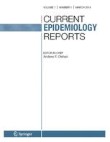
Abstract
Purpose of Review
We investigated the risk profiles of patients using direct oral anticoagulants (DOAC) or vitamin K antagonists (VKA) in European cohort studies to estimate the importance of potential (measured or unmeasured) confounding factors in analyses comparing these drugs. We searched MEDLINE and EMBASE (2008–2018) for relevant studies and extracted information on age, sex, comorbidity, Charlson comorbidity index, HAS-BLED score (assessing risk of bleeding) and CHA2DS2-VASc score (assessing risk of stroke).
Recent Findings
Overall, 66 studies with 2,808,757 patients were included. Most patients were from France (37%), Denmark (24%) and Germany (23%). In 56 studies (85%), the focus was on patients with atrial fibrillation. Of the 43 studies comparing DOAC with VKA users, 33% reported a higher and 16% a lower age of DOAC compared with VKA users. The mean age varied by about 1 year in most of these studies. Rivaroxaban was used in the widest age range. Patients with DOAC more often had a history of stroke or bleedings, and patients with VKA more often had a history of diabetes, renal failure, cancer, heart failure or other heart diseases. Most studies did not observe differences regarding the HAS-BLED score or the CHA2DS2-VASc score between groups.
Summary
Our review suggests that there are relevant differences in the risk profiles of DOAC versus VKA users and between users of individual DOACs. Reported HAS-BLED or CHA2DS2-VASc scores did not reflect these differences. These patterns require careful consideration in the interpretation of observational studies comparing the effectiveness and the risks of these drugs, also when comparing the results of studies conducted in different countries.
Δεν υπάρχουν σχόλια:
Δημοσίευση σχολίου